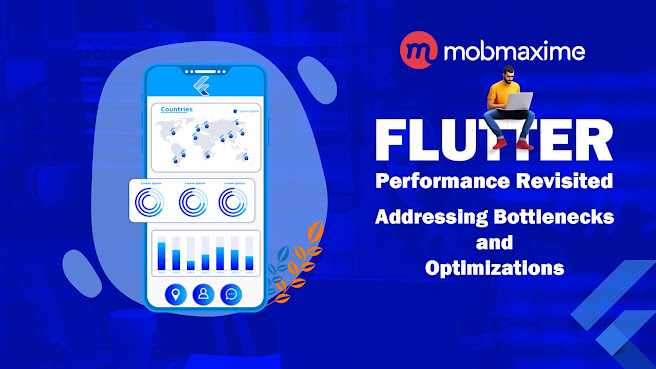In today's mobile-first world, a smooth and responsive user experience reigns supreme. Even Flutter applications, admired for their beautiful UIs and cross-platform capabilities, can encounter performance bottlenecks. This article explores common performance challenges and provides actionable optimizations to ensure your Flutter app delivers a stellar experience.
Common Flutter Performance Bottlenecks:
- Overly Complex Widget Trees: Excessive nesting and intricate widget structures can hinder rendering. Strive for clean, well-organized hierarchies to minimize rendering overhead.
- Resource-Intensive UI Elements: High-resolution images and custom widgets with complex logic can slow down rendering. Consider optimizing image sizes, caching data, and simplifying custom widgets where possible.
- Unnecessary Rebuilds: Frequent widget tree rebuilds, even for minor updates, are wasteful. Leverage techniques like
keyproperties, optimizedsetState, and theBlocorProviderpatterns to minimize unnecessary rebuilds. - Frequent Network Calls: Excessive network requests introduce latency. Implement caching mechanisms, optimize network calls, and consider libraries like
diofor efficient network handling. - Improper Asynchronous Handling: Asynchronous operations can lead to UI stalls. Utilize
FutureBuilderorStreamBuilderwidgets to manage asynchronous data gracefully and avoid blocking the main thread.
Must Read: Sustaining Success in Flutter Application Development
Optimizations for a Flawless Flutter Experience:
- Harnessing Profilers: Flutter provides robust profiling tools like DevTools profiler and Observatory. Use them to pinpoint performance bottlenecks and identify areas for improvement.
- Stateless Widgets: Opt for stateless widgets whenever possible. They are inherently more efficient than stateful widgets as they only rebuild when their properties change.
- Memoization: For expensive calculations or UI elements, employ memoization techniques like the
buildmethod or thememoizefunction from thepackage:flutter_cache_managerpackage to cache results and prevent unnecessary recalculations. - Lazy Loading: Load data only when needed, especially for large datasets. Libraries like
flutter_staggered_grid_viewor implementing custom lazy loading mechanisms can significantly improve scrolling performance. - Platform Channels: For tasks requiring native platform functionality, utilize platform channels effectively. This ensures optimal performance on both Android and iOS.
The Importance of a Top Flutter App Development Company
Building high-performing Flutter applications requires expertise in crafting a performance-optimized architecture, implementing best practices, and utilizing profiling tools. Partnering with a top Flutter app development company can make all the difference.
Benefits of Hiring Flutter App Developers:
- Performance-Optimized Architecture: These companies employ experienced developers who design Flutter apps with performance in mind, using techniques like code splitting, asset optimization, and effective memory management.
- Best Practices and Optimizations: They stay current on the latest Flutter performance advancements and integrate them seamlessly into your app's development process.
- Profiling Expertise: Their teams leverage profiling tools to pinpoint performance issues early on, ensuring a smooth and responsive user experience.
Conclusion:
By understanding common pitfalls and implementing effective optimizations, you can ensure your Flutter app delivers a flawless user experience. Partnering with a top Flutter app development company and hiring their skilled Flutter app developers provides invaluable guidance throughout the development process, ensuring exceptional performance and user satisfaction.
Ready to build a high-performing Flutter app? Leverage the expertise of a top Flutter app development company today!







0 Comments